I Uinsubscribe From Emails Bit They Continue to Come Is There Anyi Way to Stop Them
If you have an email address, chances are you've received a spam email before. Spam emails are unsolicited messages that may ask for monetary donations, alert you about the security of your account or advertise products and services you didn't sign up for.
While spam emails are annoying at best, they can also be incredibly harmful if they're laced with malware designed to infect your device or steal your personal information. To prevent this from happening and regain control over your inbox, follow this guide on how to stop spam emails.
1. Train Your Spam Filter
While your first impulse might be to delete spam emails as soon as they hit your inbox, this doesn't do much to prevent them from ever reaching you in the first place.
Many email hosting services provide built-in filters that automatically filter out potential spam messages, but you can increase your protection by further training your spam filter to recognize spam emails. This involves manually filtering spam inside your inbox, and is a tool for more thoroughly preventing spam and reporting spam messages to your email client. Here's how to do it:
How to Filter Spam in Gmail
To report an email as spam in Gmail, click the Report spam button. It looks like an exclamation mark and is located at the top of the page next to the Archive and Trash buttons. You can do this from your main inbox page or within a specific message. To filter several emails at once, head to your main inbox and select the emails you want to report, then click the Report spam button.
Once you do this, the selected emails will be sent to your spam folder and you shouldn't receive emails from those senders in the future.
How to Filter Spam in Yahoo!
To report an email as spam in Yahoo! Mail, you'll click the icon with an "X" labeled Spam in the toolbar at the top of your inbox, next to the Trash button. To report several emails at once, simply perform the process from your main inbox page and select all the emails you want to report before clicking the Spam button.
2. Block Spam Email Addresses
If you've followed the steps above to report an email as spam but find you're still receiving emails from certain senders, you can block their emails from ever reaching your inbox.
How to Block Spam in Gmail
- Open a message from the specific sender you want to block.
- In the top-right corner next to the sender details, click the three vertical dots to open the options menu.
- Click Block [sender].
- If you also want to report the message, click the Report spam option below the Block [sender] option.
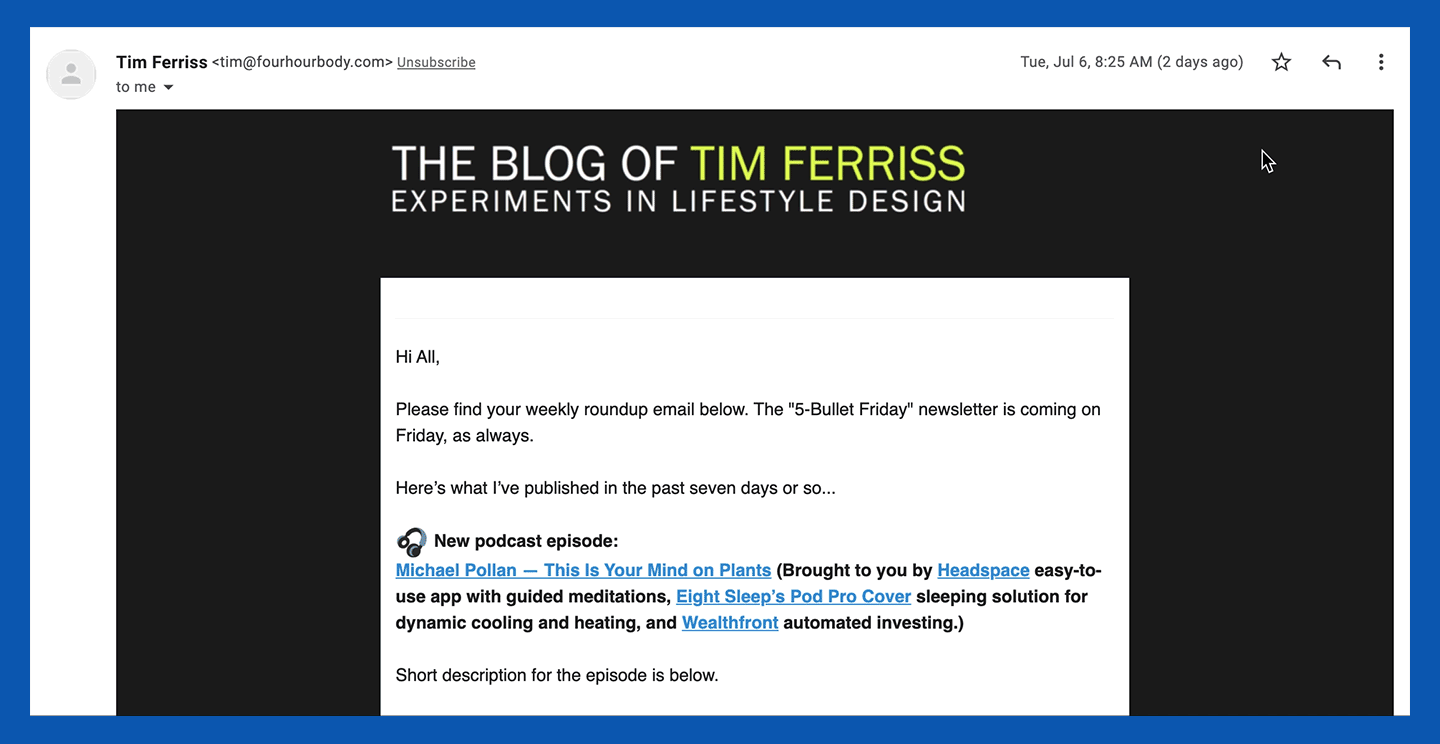
How to Block Spam in Yahoo!
To block emails in Yahoo, start in the homepage of your inbox.
- Select the message or messages from a certain sender you want to block by clicking the check box to the left of the message.
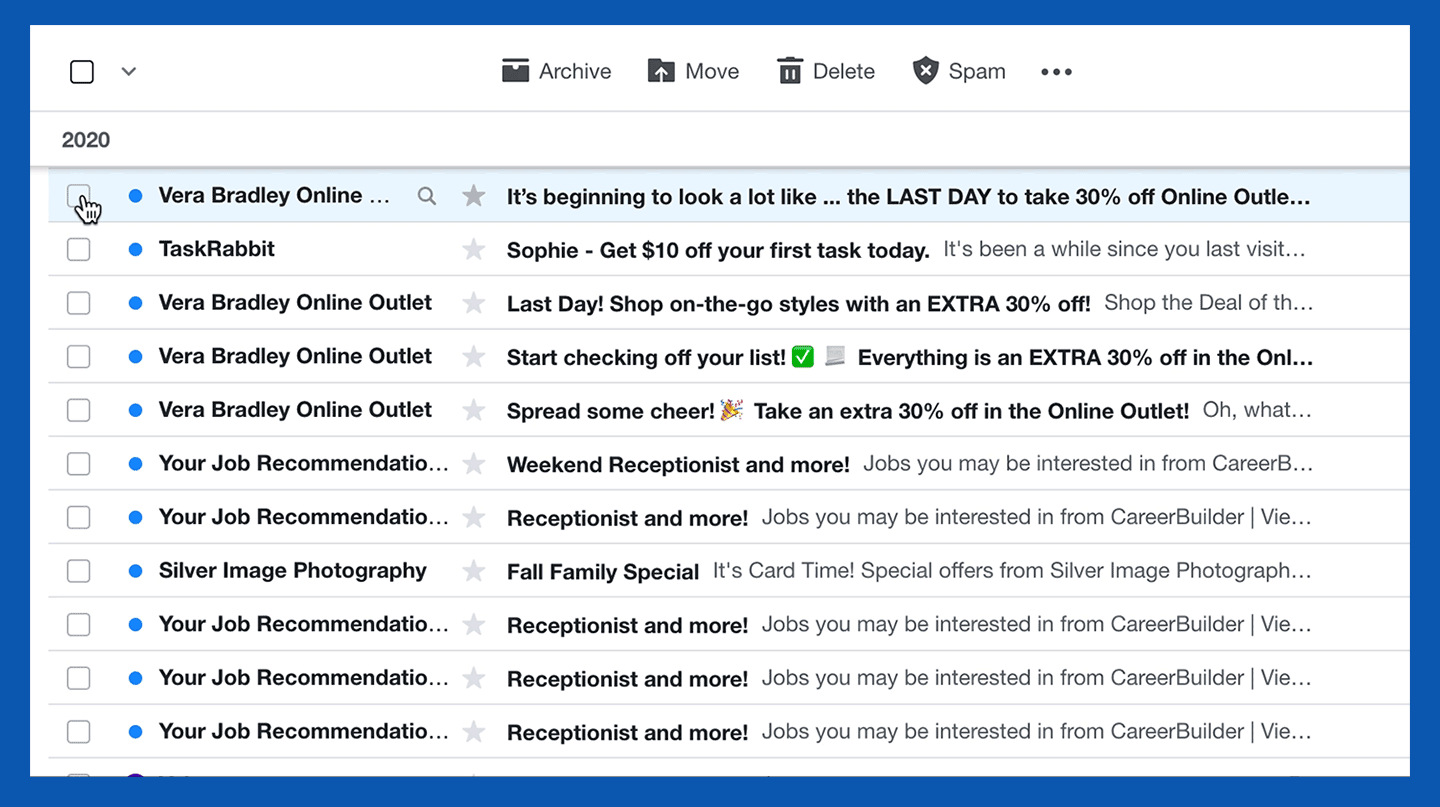
- In the toolbar at the top of your inbox, click the three horizontal dots next to the Spam button.
- Select the Block senders option.
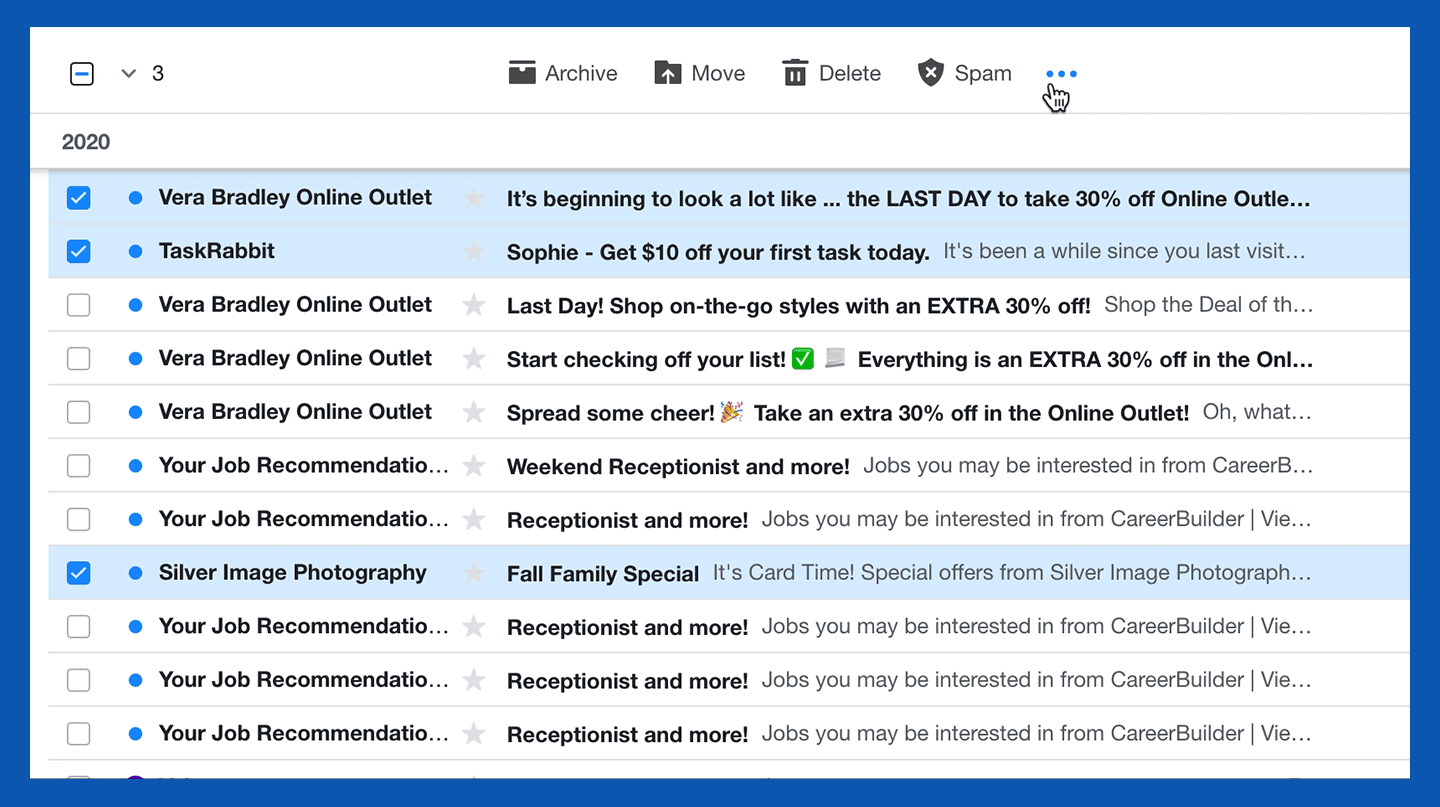
- Review the senders you wish to block and choose your preferred settings for future and existing emails, then click OK .
3. Unsubscribe from Mailing Lists
Not all spam emails are malicious—sometimes you might just be receiving a large volume of marketing or promotional emails from a certain company or brand that you signed up for at some point. These can clutter your inbox fast, and if you never read them or no longer wish to receive them, you can simply unsubscribe from the mailing list to prevent them from hitting your inbox.
To do this, simply open one of the emails and scroll to the bottom of the message. Find the "unsubscribe" button and click it.
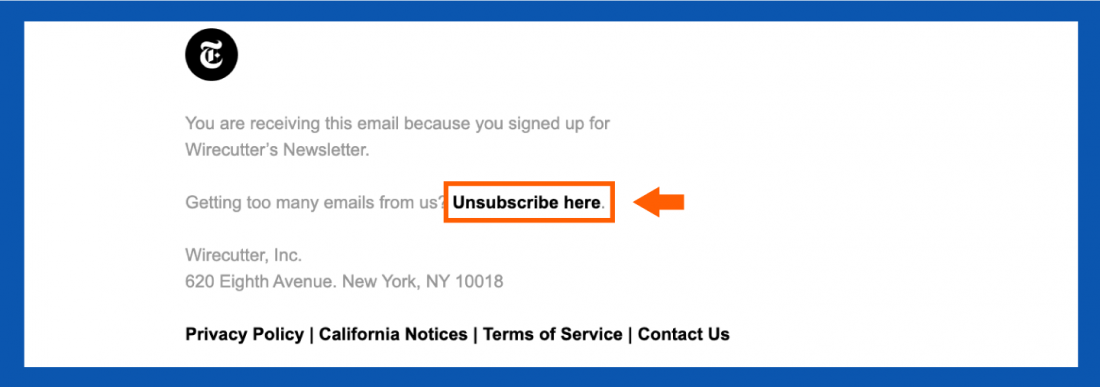
Once you click the unsubscribe button, you might be redirected to a web page that asks you to confirm your unsubscription. If so, follow the steps provided to complete your unsubscription. You will no longer receive marketing or promotional emails from that company.
Unsubscribing vs. Filtering Unwanted emails
How can you determine whether an email is a legitimate marketing email from a reputable brand or a dangerous spam email? First, you should look for the tell-tale signs of spam or phishing emails: an unclear subject line, excessive grammar mistakes or anything that conveys a sense of urgency with a payment request are all obvious signs of a spam email.
On the other hand, legitimate promotional emails will always use the official email address of a company. For example, you should be wary of an address that reads SpotifySupport@gmail.com since reputable companies wouldn't use Gmail as their email host. Instead, it would read support@spotify.com.
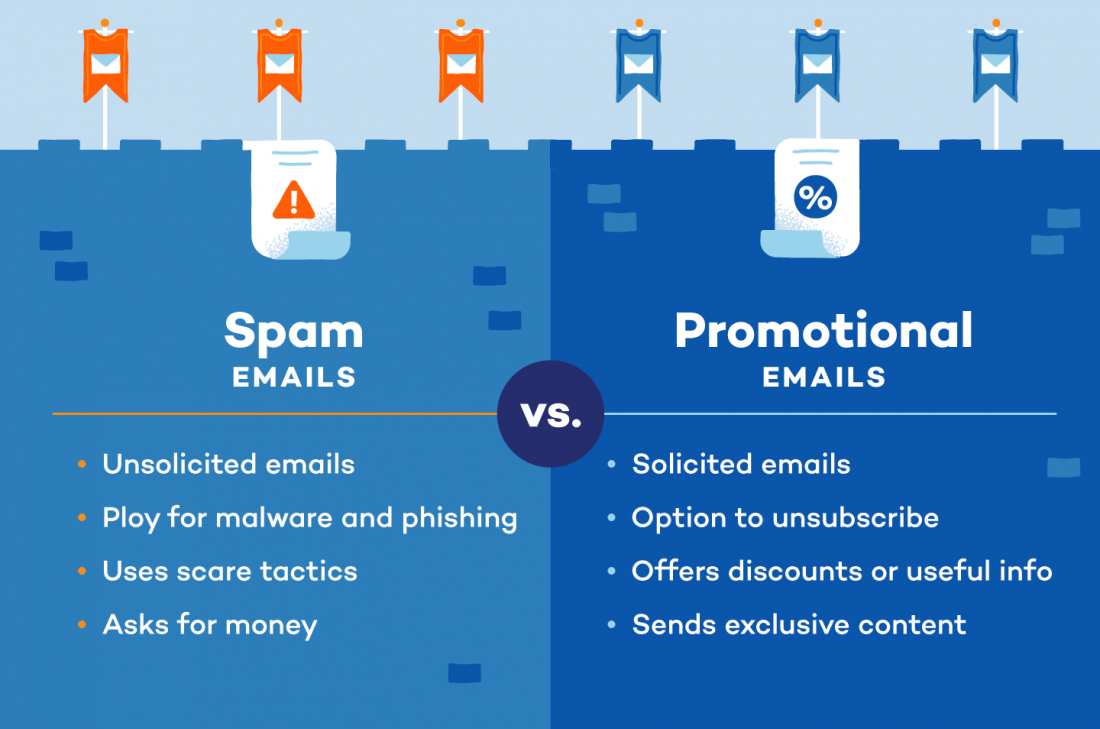
4. Create a Secondary Email Address
Many unwanted messages make their way to your inbox when you order a product or are required to provide your email address to download a particular file. When you do this, some companies automatically sign you up to receive unwanted additional marketing and promotional emails. Signing up and registering with websites using your personal or business email can lead to excess spam in your inbox.
One workaround for this is to create a secondary email address that you use solely for certain online activities, like online shopping, sign-ups and subscriptions. While a secondary email address won't stop spam from appearing, it will ensure those unwanted emails are sent to your alternative email address instead of your primary account, keeping your main inbox free from clutter.
Get Rid of Existing Spam
A simple way to declutter your inbox is to go in and delete any existing spam emails taking up space. This is quick and easy to do using your email server's search function—simply type "unsubscribe" in the search bar to surface any unwanted promotional emails, select the ones you want to delete, then click the "delete" button or a trash can icon. This allows you to clear your inbox of large volumes of spam emails all at once.
Types of Spam Emails
While some types of spam emails are mostly just a nuisance, some can put your personal information or finances at risk. Certain types of spam emails can contain viruses, malware and other threats designed to either compromise your device or compromise your finances (or both). Here are some of the most common types of spam emails to look out for.
Phishing Emails
Phishing refers to emails that appear to come from a trusted source like a government agency, bank or a reputable company or brand, but are actually intended to trick the recipient into revealing confidential information or sending a payment.
A phishing email may ask you to follow a link to a fraudulent or spoofed website where you'll be prompted to enter your credit card number or verify your password. Regardless of the specific details in a phishing email, they all have the same goal: capturing sensitive information to exploit you financially or otherwise.
Trojan Horses
A Trojan horse or Trojan is a type of malware disguised as a legitimate software program. They may be hidden inside free software downloads or come in the form of an email attachment, potentially from someone you know.
Once activated, the trojan installs malicious code, typically in the form of spyware or viruses, designed to create issues with your computer. It may allow the attacker to remotely control your device, lock you out of your accounts or gain access to personal information.
Zombies
Zombies are a type of malware that is hidden in email attachments. When scammers take over an email account, they'll proceed to send replies to email conversations that already took place in your inbox—making victims far more susceptible to falling for this type of attack. These messages typically contain a phishing link or a malicious attachment intended to steal victims' personal data and credentials.
Tips to Proactively Stop Spam Before it Starts
While the tips above can help with removing existing spam and blocking unwanted senders who have made their way into your inbox, the key to a truly spam-free inbox—or as close as you can get to one—requires a more proactive approach. Consider the following tips to prevent your email address from falling into the hands of spammers in the first place.
Use a Third-Party Spam Filter
While most email hosting platforms come equipped with an automatic spam filter, pairing it with a third-party spam blocker can provide an added layer of security and help catch spam that your email host might have missed.
For an easy-to-use free option, Mailwasher is a great choice. Once you sign up, this service will start applying a series of filters to catch unwanted messages. It even lets you review the captured emails online before they actually hit your inbox.
Another effective option is SpamSieve, which is $30 for a paid membership with a free trial available. Similar to Mailwasher, it relies on an intelligent filtering system to sort out spam from your inbox.
As you work with these third-party filters over time and mark which messages are spam and which are safe, both SpamSieve and Mailwasher adapt to your inbox and become smarter in their ability to recognize what's spam and what's not.
Keep Your Email Address Hidden
You should think of your email address as a valuable piece of personal information—because it is. You don't want to hand it out to just anyone, and it's best to keep your primary email address as private as you can.
This is important for public pages like social media profiles or a personal website, which are easy targets for scammers or bots to find your email address. Check the account settings on platforms like Facebook, Twitter and LinkedIn and make sure your email address is only visible to yourself and your friends.
If you have a job that requires your contact information to be visible online, a workaround to maintain your security is to write your address in longhand. For example, instead of "johndoe@google.com", the longhand could be "John Doe at Google's Email Service". This format is still readable to humans, but prevents automated bots from recognizing it as an email address.
Don't Interact with Spam Emails
If you've ever thought about responding to a spam email, don't—even if it's a request to permanently remove yourself from their mailing list. This signals to whoever is on the other end of the email that your account is active, and could lead to receiving even more spam as a result.
Additionally, it's important to never click on anything in an email from an unknown sender. Even if they seem like a legitimate company, it's crucial to avoid clicking links or opening attachments from anyone you're not 100% sure is who they say they are.
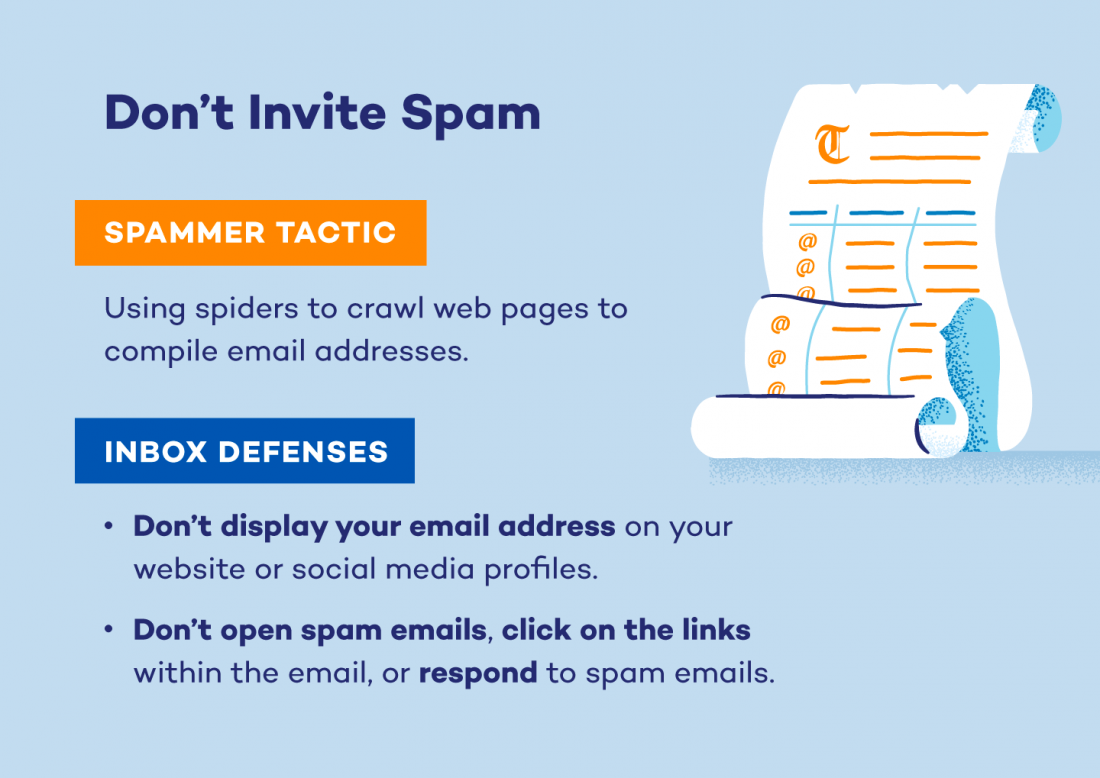
Read Apps and Websites' Terms and Conditions
Any time you download, purchase or subscribe to something, you're asked to agree to certain permissions before you can gain access. Some of these terms include an agreement to receive regular emails from the company or permission to share your information with third parties.
While it's common to skip through the fine print, reading the Terms & Conditions is an easy way to keep unnecessary spam out of your inbox. This goes for apps, accessing gated content online, online games and software and purchases for products or services.
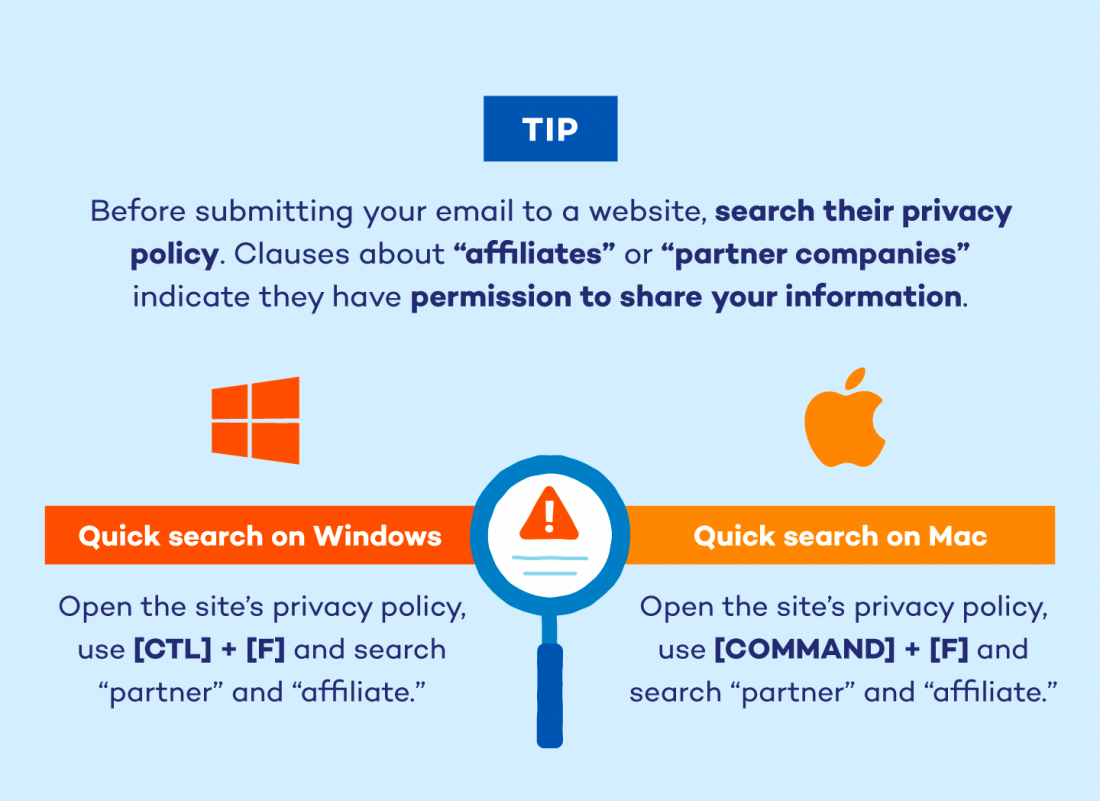
Create a New Email Address
If you've tried the strategies above and still can't keep spam at bay, it's possible your email was exposed to a data breach or you unknowingly responded to spam in the past. Whatever the cause, a persistent overload of spam might mean it's time to switch over to a new email account entirely.
You can do this by registering for a new email account with your preferred email host. Once you do, you should notify your contacts from your new account to let them know you've changed email addresses. Be sure to keep both addresses active for a few months to keep track of any incoming emails that need to be redirected to your new account.
While your old email account may continue to get spam, this method ensures it stays out of your primary inbox and reduces the chances you'll accidentally activate a malicious email. Once you can get rid of the old address, you should have significantly less spam.
With automated technology advancing every day, learning how to stop spam emails is crucial to protect your online identity—it only takes a few steps. Once you make it a point to prevent spam emails, email hosts and service providers can filter your inbox. For an additional level of security, use complicated passwords that don't follow an obvious sequence, and use additional password protection like a strong home antivirus to keep hackers at bay.

Source: https://www.pandasecurity.com/en/mediacenter/tips/how-to-stop-spam-emails/
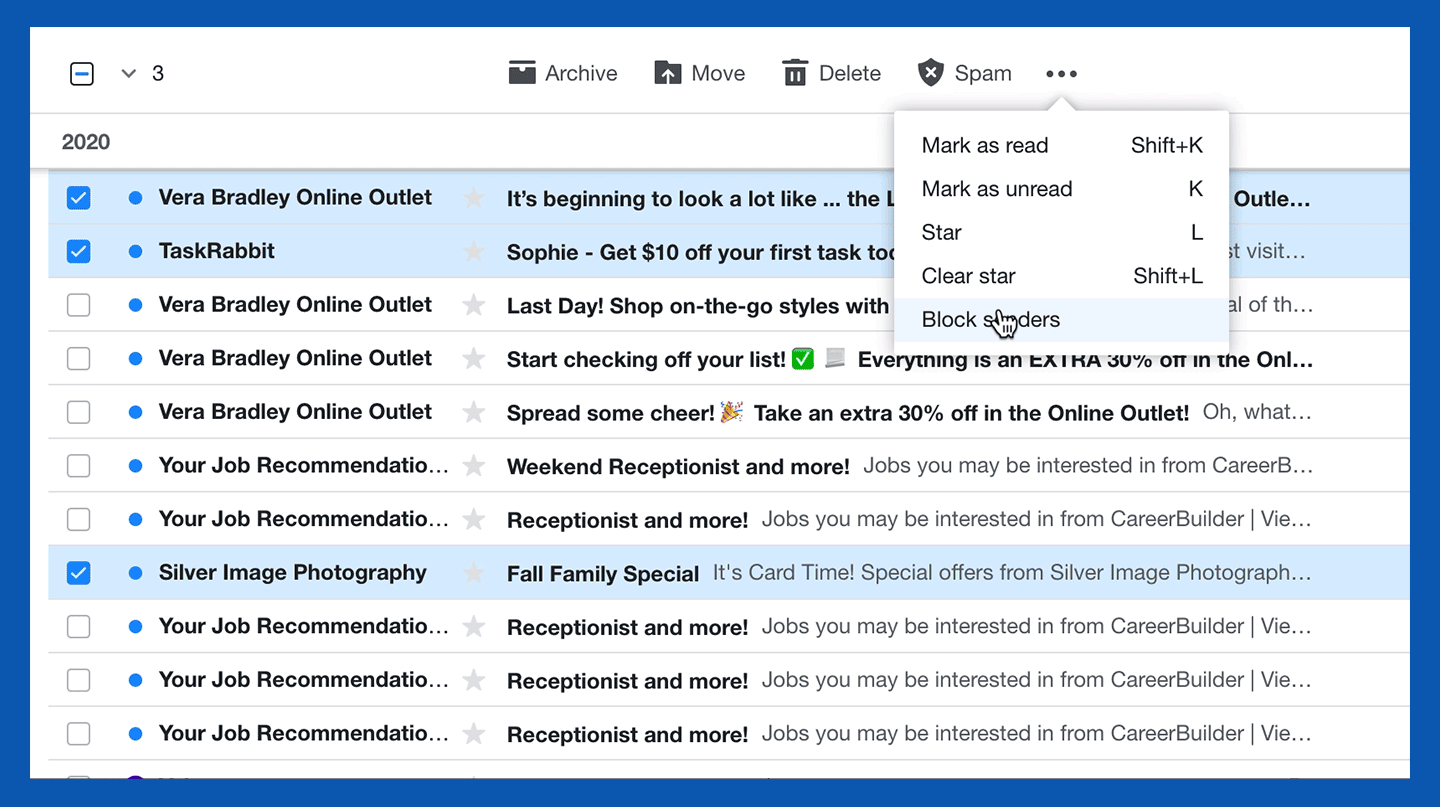
0 Response to "I Uinsubscribe From Emails Bit They Continue to Come Is There Anyi Way to Stop Them"
Post a Comment